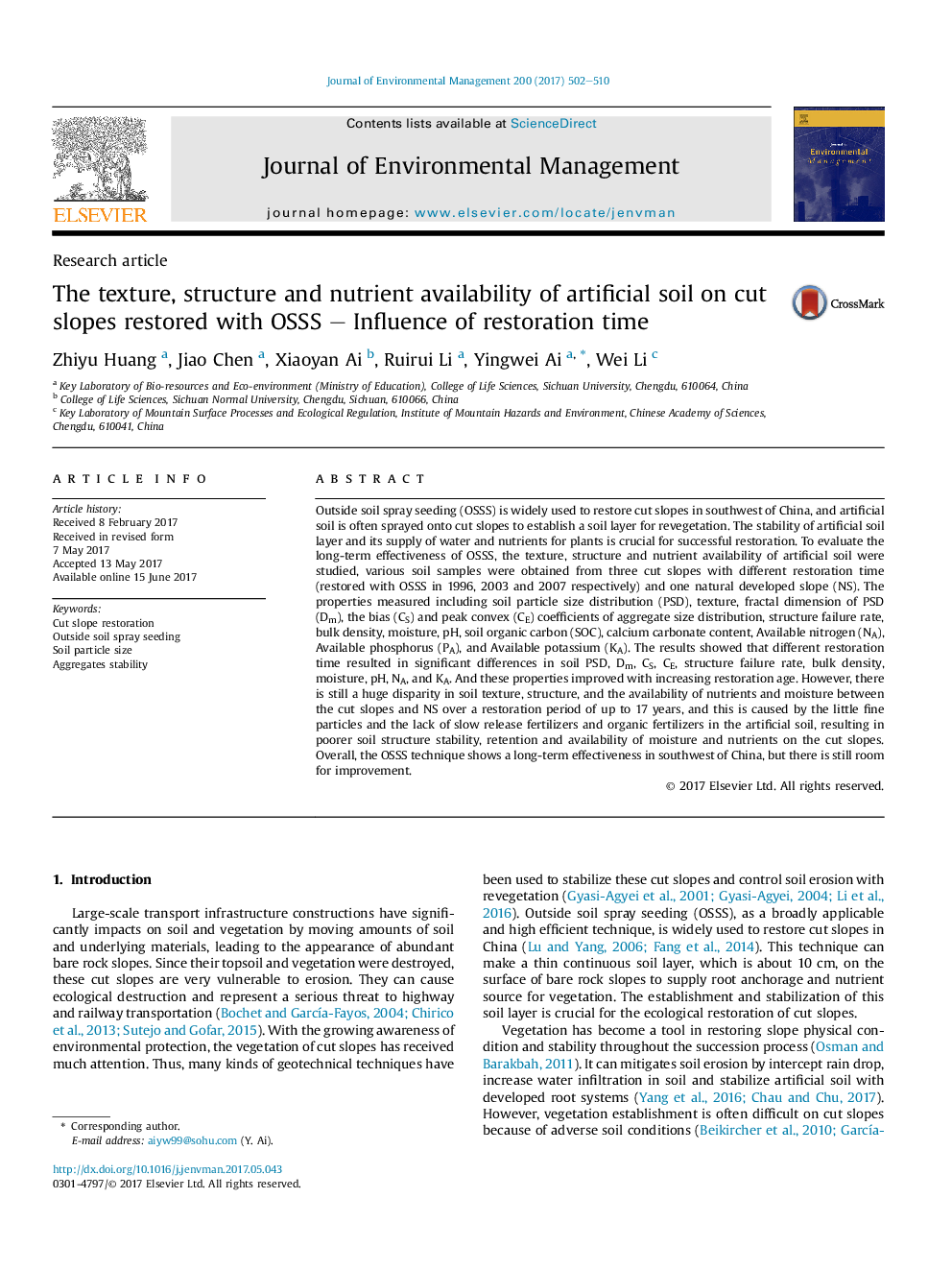| Article ID | Journal | Published Year | Pages | File Type |
|---|---|---|---|---|
| 5116360 | Journal of Environmental Management | 2017 | 9 Pages |
â¢The OSSS technique shows a long-term effectiveness in southwest of China.â¢Longer restoration time resulting in better texture and structure.â¢Artificial soil with longer restoration time shows higher available nitrogen and available potassium.â¢Artificial soil condition markedly poor than that of NS after restoration for 17years.â¢More scientific management measures be taken to promote restoration of cut slope.
Outside soil spray seeding (OSSS) is widely used to restore cut slopes in southwest of China, and artificial soil is often sprayed onto cut slopes to establish a soil layer for revegetation. The stability of artificial soil layer and its supply of water and nutrients for plants is crucial for successful restoration. To evaluate the long-term effectiveness of OSSS, the texture, structure and nutrient availability of artificial soil were studied, various soil samples were obtained from three cut slopes with different restoration time (restored with OSSS in 1996, 2003 and 2007 respectively) and one natural developed slope (NS). The properties measured including soil particle size distribution (PSD), texture, fractal dimension of PSD (Dm), the bias (CS) and peak convex (CE) coefficients of aggregate size distribution, structure failure rate, bulk density, moisture, pH, soil organic carbon (SOC), calcium carbonate content, Available nitrogen (NA), Available phosphorus (PA), and Available potassium (KA). The results showed that different restoration time resulted in significant differences in soil PSD, Dm, CS, CE, structure failure rate, bulk density, moisture, pH, NA, and KA. And these properties improved with increasing restoration age. However, there is still a huge disparity in soil texture, structure, and the availability of nutrients and moisture between the cut slopes and NS over a restoration period of up to 17 years, and this is caused by the little fine particles and the lack of slow release fertilizers and organic fertilizers in the artificial soil, resulting in poorer soil structure stability, retention and availability of moisture and nutrients on the cut slopes. Overall, the OSSS technique shows a long-term effectiveness in southwest of China, but there is still room for improvement.
